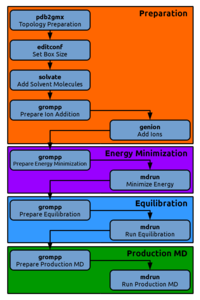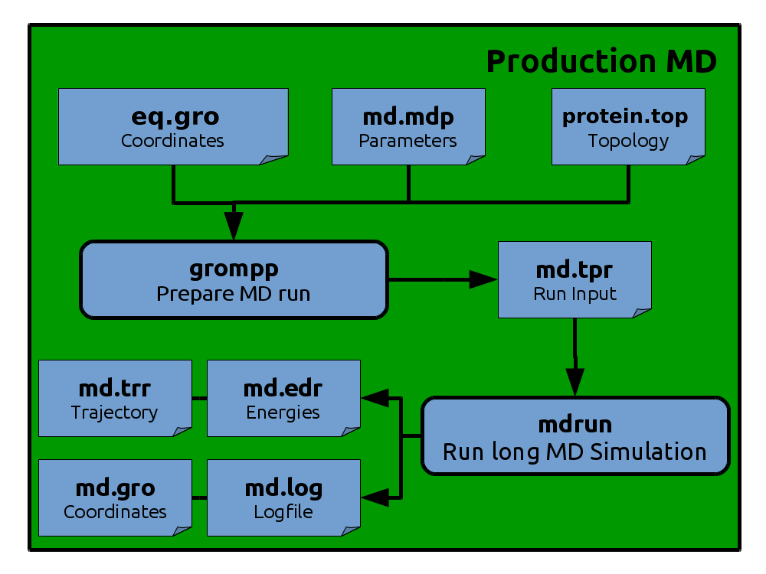Production MD
Now we will set up and run the unrestrained production MD simulation, which we will analyse more thoroughly afterwards.
You already know how to create the run input file, so this is slowly becoming a routine.
The only things that we change are the removal of position restraints, usage of different thermo- and barostats,
and increasing the simulation length to 1 ns.
The reason we now use the Nose-Hoover thermostat and Parrinello-Rahman barostat is that they more accurately sample
the isothermal-isobaric ensemble
We did not use them for equilibration as they introduce large oscillations around their target values (T and p)
if the system starts far away from equilibrium.
Again, have a look at the mdp file (md.mdp) and familiarize yourself with the parameter settings.
Run grompp:
gmx grompp -f md.mdp -po md.out.mdp -c eq.gro -t eq.trr -p kigaki.top -o md.tpr
mdrun:
gmx mdrun -v -deffnm md >& md.out &
If you are lucky, your instructor might have prepared a somewhat longer trajectory for you for analysis. The example output provided in the following analysis is based on a 100 ns MD simulation.

